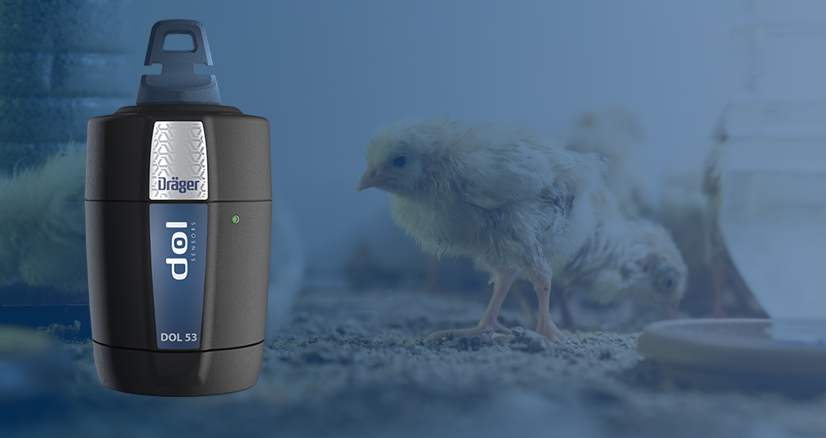
Brought to you by Dol-Sensors A/S
Maximize Profits and Enhance Livestock Welfare

May 2, 2024 in Features
By Louise Kofod
 (Photo: courtesy of dol-sensors A/S)
(Photo: courtesy of dol-sensors A/S) The Award-winning DOL 53 Ammonia Sensor is the answer
In the dynamic world of broiler production, managing environmental factors is crucial for the welfare of the livestock and the financial viability of the operation. A significant innovation in this area is the DOL 53 ammonia sensor from the Danish sensor company dol-sensors a/s. DOL 53 is an instrument crafted to revolutionize the way poultry farmers track and manage the environmental conditions inside their barns.
The Critical Impact of Ammonia on Broiler Production
In poultry barns, ammonia emerges as a byproduct of manure decomposition. This process involves the breakdown of nitrogen compounds, leading to the creation of ammonia (NH3+) and ammonium (NH4-). Since ammonia is lighter than air, it rises, mixing with the barn’s atmosphere, which can result in respiratory issues for the birds and an unpleasant odor. Factors such as low pH levels in the litter, elevated temperatures, and significant humidity within the poultry environment can accelerate the production of ammonia.
Ammonia significantly contributes to respiratory ailments in chickens, and elevated ammonia levels in the bedding within a poultry barn can lead to severe sores on the animals’ breasts and feet. Additionally, ammonia exposure is linked to reduced weight gain, increased feed conversion ratio (FCR), and diminished welfare for the animals.
Moreover, high ammonia concentrations create an unpleasant and harmful working environment for humans.
Studies have consistently shown that ammonia (NH3) levels in broiler houses significantly influence the health and growth of the birds. Even low concentrations of ammonia (25 ppm) can lead to a reduction in bird weight by 2-7% at 28 days of age. This effect is magnified at higher concentrations, with 50 ppm levels linked to a 16-19% reduction in weight. These weight reductions directly correlate with financial losses, emphasizing the need for diligent monitoring and management of ammonia levels to ensure optimal broiler growth and welfare.
Earn at least 4,000 CAD extra per batch
Research indicates that neglecting to control ammonia levels can have substantial financial repercussions. In a typical livestock house hosting 25,000 broilers, excess ammonia can diminish profits by around 4,000 CAD or more per batch. This stark figure highlights the economic benefits of investing in effective ammonia monitoring and control systems.
The Solution Lies in Continuous Monitoring
The DOL 53 ammonia sensor stands out in the market for its precision and reliability. Engineered specifically for the agricultural sector, it provides continuous, accurate readings of ammonia concentrations, regardless of the levels present. Its design minimizes cross-sensitivity to other gases, ensuring that farmers get accurate data to make informed decisions. Moreover, the sensor’s robust construction makes it ideal for the harsh conditions of livestock facilities.
Dave Jonkman from Jonkman Equipment Ltd in Canada has great experiences with DOL 53 ammonia sensor. “This sensor is much better than other ammonia sensors on the market. It is easy to install in the barn since it needs no calibration and fits common farm systems. I’ve seen a lot of great cases with monitoring ammonia in poultry houses from my customers.”
The DOL 53 ammonia sensor offers a plethora of benefits and advantages that make it an indispensable tool for modern broiler production:
Increased Profits: By enabling precise ammonia control, the sensor can help farmers avoid the weight reductions associated with ammonia exposure, potentially boosting profits by around 4,000 CAD per batch.
Improved Animal Welfare: Lower ammonia levels lead to healthier, more comfortable birds, aligning with the best practices in animal husbandry.
Accurate Measurement: The sensor’s high accuracy ensures reliable data for decision-making and ventilation systems.
Versatility: Effective in both high and low ammonia concentrations, the sensor is adaptable to various farming needs.
Durability and Ease of Use: Designed for longevity and minimal maintenance, the sensor is user-friendly, requiring no calibration during its service life and offering easy installation and integration into existing systems.